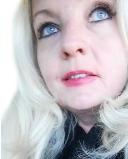Synesthesia
The Synesthesia Tool Kit Debuts Online
Largest grant in synesthesia history goes to Dr. Julia Simner for a new portal.
Posted January 24, 2020 Reviewed by Devon Frye
There is a new resource available for parents and educators working with young synesthetes: an online synesthesia "tool kit."
Built by the Multisense Synaesthesia Research Lab, directed by Professor Julia Simner at the University of Sussex in England, it was funded with a historic and generous 1.3 million € grant by the European Research Council.

The website is a living, breathing channel which connects caregivers to the latest research, testing, and resources. Researchers in the field will also find it to be full of cutting-edge information.
I had the opportunity to ask Dr. Simner more about its genesis and the early, very positive response to it.
Please tell me a little more about what inspired you to create such a great resource:
JS: So this particular resource is all about synaesthesia in children. The idea for it dates back a number of years. I was receiving a very high number of emails from parents, teachers, ed psychs, and other child-support workers, all telling me about their children with synaesthesia and asking whether there was a test. I had recently created one [a test for childhood synaesthesia] just for research purposes, but it wasn't available to others—and it needed some work—so I had nothing to share with them. They also asked what they should do, and again there were almost no resources and no info about how "syn" children might be different from their peers.
I made an application to the ERC (European Research Council) and was awarded 1.3 million euros in 2014, which was (and is) the largest research grant ever given in the field of synaesthesia research. The funding allowed me to hire a team and spend the last five years developing a better test and validating it on thousands of children (we individually tested over 6,000 children aged 6-12 years).
In doing so, we've also been able to find out all about children with synaesthesia, and their strengths and challenges. The overall picture has been that synaesthetic children are very strong in their cognitive abilities (literacy, numeracy, memory, spatial abilities) but appear perhaps somewhat disadvantaged in their well-being (they have significantly higher rates of anxiety disorder, and some type of mood differences; their moods are more "moderate"—so less joy than the average child, but also less sadness). Of course, this was true of synaesthetes as a group—it doesn't mean that every child with synaesthesia will be doing poorly in well-being—and in fact, most child synaesthetes are just fine—and super smart.
We've just been awarded another 150,000 Euros to take our test and package it into an app for clinicians. Hopefully, completing the circle and allowing anyone contacting me in the future with the same questions ("Is there a test?" "What should we do?") will get all the answers they're looking for.
Can you give more examples of some of what parents with "synnie" kids come to you about in general?
JS: Oh, many things. In fact, I've just made them all available on the same website (www.syntoolkit.org). If you click the "teacher" icon, you can see how synaesthesia can manifest in the classroom. If you click the "parent" icon, you can find similar info. You can also download an information sheet—we've added a sheet that parents can download and complete about their child to hand to the school teacher—i.e. to open dialogues about synaesthesia in classrooms.
How has the response been so far?
JS: Awesome. Thousands of people have accessed our website and downloaded the form. And even locally, we held a one-day conference a few months ago on children's sensory differences, attended by all the types of people (parents, teachers, SEND-teams, education-support services). All the tickets flew, and 200 people attended. There were talks from leading experts in all kinds of sensory differences. I spoke on synaesthesia, another professor spoke on hearing sensitivities, another on autism and the senses, another on interoception, etc.
We also had first-hand accounts from synaesthetes and young people with autism who had other sensory differences. At the end, I was very touched by parents who stood up to make comments, some of them in tears, to simply say how happy they were that researchers were finally taking notice of their children with these sensory differences.
The response from the research community has been really positive as well—our findings have almost all now been accepted into the peer-reviewed literature. I've also just received another recent grant from the REAM Foundation ($400,000 dollars) to look at another sensory difference in children (specifically, misophonia—a hearing sensitivity that causes an intense disliking of certain sounds, like chewing).
We're hoping to be contacted by people with misophonia—especially parents (we're aiming to determine when it emerges in childhood). Anyone who thinks they have misophonia can get in touch here: multisense@sussex.ac.uk.
Congratulations to the team and I will be directing the many parents and educators with questions about these special traits to the tool kit going forward.




